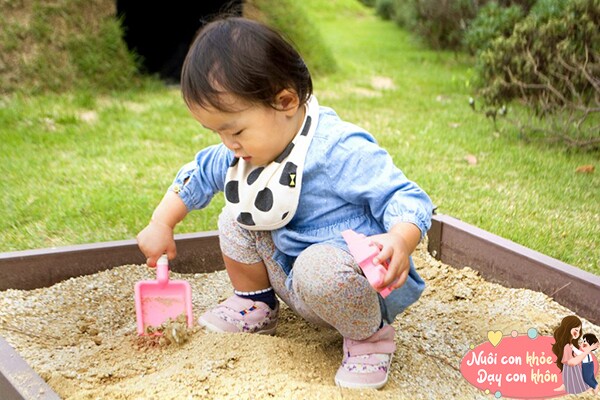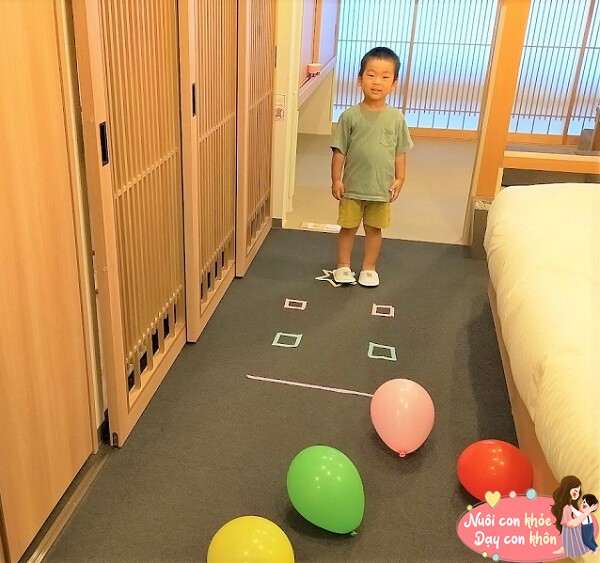Integrating sensory play is crucial for a child’s holistic development, according to experts. This helps children develop cognitive abilities, improve motor skills, and enhance social interaction.
Through engaging games, children learn to perceive and process information from their senses, such as visual, auditory, tactile, and gustatory senses. Therefore, parents should focus on sensory play to enhance their child’s overall development.


What is Sensory Integration?
Sensory integration refers to the brain’s process of organizing and interpreting information from various senses of the body, such as visual, auditory, tactile, vestibular, and proprioceptive senses. This integration helps form meaningful sensory information and guides our behavioral responses.
This process enables children to understand and interact with their surroundings more effectively.

Play promotes healthy child development.
Good sensory integration skills are essential for a child’s academic, social, and life skills development. When children can efficiently process information from multiple senses, they can easily identify and respond to different situations.
For instance, during a physical game, a child uses their visual sense to track the movement of other children, their auditory sense to follow instructions, and their tactile sense to perceive their surroundings. This sensory coordination enhances their participation, communication, and future teamwork abilities.

3 Sensory Integration Games for 2-Year-Olds
Tactile Play: Sand and Water Exploration
Objective: Enhance tactile sensitivity and encourage exploration by touching different materials.
How to Play: Prepare a small bucket filled with sand and another with water.
Let the child touch and feel the sand and water with their hands, experiencing the different textures.
You can provide small toys like a tiny shovel or bucket for them to dig, scoop, and pour.
Note: Ensure the sand is clean and free from impurities, and maintain a comfortable water temperature to prevent accidental ingestion or injury.

Sand and water play enhances tactile sensitivity and exploration.
Vestibular Sense Game: Spin in a Chair
Objective: Stimulate the vestibular system through spinning movements, improving balance and spatial awareness.
How to Play: Purchase a safe and stable spinning chair with a handle.
Let the child sit on the chair and gently push it to experience the spinning sensation. This allows them to control the speed and direction, fostering independence.
Note: Supervise the child to ensure safety and avoid spinning too fast or for too long.
Perception Game: Obstacle Course Race
Objective: Enhance the child’s perception and coordination by navigating through obstacles.
How to Play: Set up a simple obstacle course at home or outdoors using small chairs, cushions, hoops, etc.
Encourage the child to climb over, crawl under, or navigate around the obstacles to complete the race.
You can offer small prizes like stickers or toys to make the game more exciting.
Note: Ensure the obstacles are safe and free from sharp edges to prevent injuries during play.

Obstacle courses enhance children’s perception and coordination.
Tips for Playing with Your Child
Parent-Child Interaction: Engage and play together, increasing interaction, participation, and enjoyment.
Moderate Challenges: Adjust the game’s difficulty according to the child’s abilities and interests, avoiding simplicity or complexity.
Safety First: Ensure a safe playing environment, avoid unsafe objects, and supervise closely.
Encouragement: Provide timely encouragement and praise to boost their confidence and enthusiasm when they complete a task or show progress.

Why Are These Games Beneficial for 2-Year-Olds?
Sensory Development: These games help children better process and integrate sensory information through tactile, vestibular, and proprioceptive play.
Improved Body Coordination: The physical activities in these games enhance body coordination and flexibility.
Encouraging Exploration: Fun activities stimulate curiosity and a desire to explore, fostering a love for learning.

Sensory integration play benefits children’s physical and mental development.
Strengthening Parent-Child Bond: Through interaction, these games deepen the emotional connection between parents and children, fostering a closer relationship.
Sensory integration play not only contributes to a child’s physical and mental development but also harmonizes the parent-child bond. Let’s create more joyful and enriching opportunities for our children’s growth.































